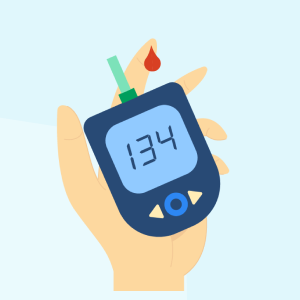Many people tend to first notice a person’s eyes. They say these are the windows to the soul. However, as you age, you may also notice how saggy the skin surrounding your eyes can get. Can blepharoplasty help you with it? This article shares all that you need to know about the surgical procedure.
How Can Blepharoplasty Make You Look Younger? Find Out Here
Expertly reviewed by Dexter Macalintal, MD · Internal or General Medicine
What Is Blepharoplasty?
Skin loses its elasticity as we all age, and gravity pulls the soft tissues of the eyelids down. Thus, causing them to sag.
Blepharoplasty, otherwise known as eyelid surgery, refers to a cosmetic procedure that can help with the said concern. It tightens the skin and soft tissues around the eyes while also removing excess skin and fat from the eyelids.
This may be performed on the upper and/or lower eyelids since excess skin can cause any of the following:
- Upper eyelid. It may occasionally hang low enough to obstruct vision.
- Lower eyelid. It can lose tone, sag, wrinkle, or even appear puffy due to the bulging fat pads. Hence, the procedure can help improve eye bags by repositioning them and possibly removing excess fat and skin.
Blepharoplasty is an important procedure in facial rejuvenation because of its direct aesthetic relationship with the brow and the cheek.
Moreover, you may also consider combining it with other facial surgical procedures like laser resurfacing or brow lifts. In addition to those, botox injections may also work in smoothing out fine wrinkles.
Are You a Good Candidate for Blepharoplasty?
Individuals 30 years of age or older who are in good health and have no other eye conditions are the best candidates for it. You should immediately inform your doctor if you have any of the following conditions:
- Eye diseases (i.e., glaucoma, dry eye, or a detached retina)
- Thyroid disorders (i.e., Graves’ disease, under or overactive thyroid)
- Cardiovascular problems (i.e., high blood pressure, and other circulatory disorders)
- Diabetes
What Can You Expect from the Procedure?
The surgeon may perform the procedure under local or general anesthesia depending on the surgical plan, the patient’s and surgeon’s preferences, and the need for concurrent procedures.
Simple upper/lower eyelid blepharoplasty warrants the use of local anesthesia wherein it only needs skin removal to take place. On the other hand, more invasive procedures like lower blepharoplasty with fat repositioning, mid-face lifts, and endoscopic browlifts, may require general anesthesia.
Upper eyelid surgery usually entails the following:
- Creating a cut (incision) along the eyelid crease where the natural skin fold is.
- Removing excess skin, fat, or muscle around the area.
- Closing the incision. The natural fold of the eyelid may help cover the scar.
Meanwhile, lower eyelid surgery usually involves the following:
- Creating an incision on the inside of the lower eyelid or just below the lower lashes.
- Repositioning or removing fat from bags beneath the eyes, as well as a small amount of skin.
- Supporting the eyelid muscles and tendon when necessary.
- Closing the incision.
Upper blepharoplasty can take up to an hour, whereas lower lid surgery can take up to 2 hours.
After surgery, the surgeon will apply the suture strips to support the eyelids. These are typically removed one week later.
Other than the different steps of the procedure, you may also expect any of the following from this list:
- Mild pain or discomfort
- Numbness
- Use of cool compresses, gauze, and dressings around the eyes
- Swelling and bruising around the eyes (even possible bruising on the whites of the eyes)
- Wet/dry irritated eyes
- Extreme light sensitivity
What Are the Risks and Complications?
There is some degree of risk to any surgical procedure despite being rare. Some of the possible risks and complications include:
- Reaction to medicines
- Bleeding, blood clots, and infection
- Temporary vision problems (i.e., double vision, blurred vision)
- Eye closure problems
- Swelling or asymmetry changes
- Tiny whiteheads
- Ectropion
Key Takeaways
The results of blepharoplasty may last for a long while. But, it is important to keep in mind that like any other cosmetic surgery, it will not stop you from aging.
Learn more about Skin Care and Cleansing here.
Disclaimer
Hello Health Group does not provide medical advice, diagnosis or treatment.























Comments
Share your thoughts
Be the first to let Hello Doctor know your thoughts!
Join Us or Log In to join the discussion